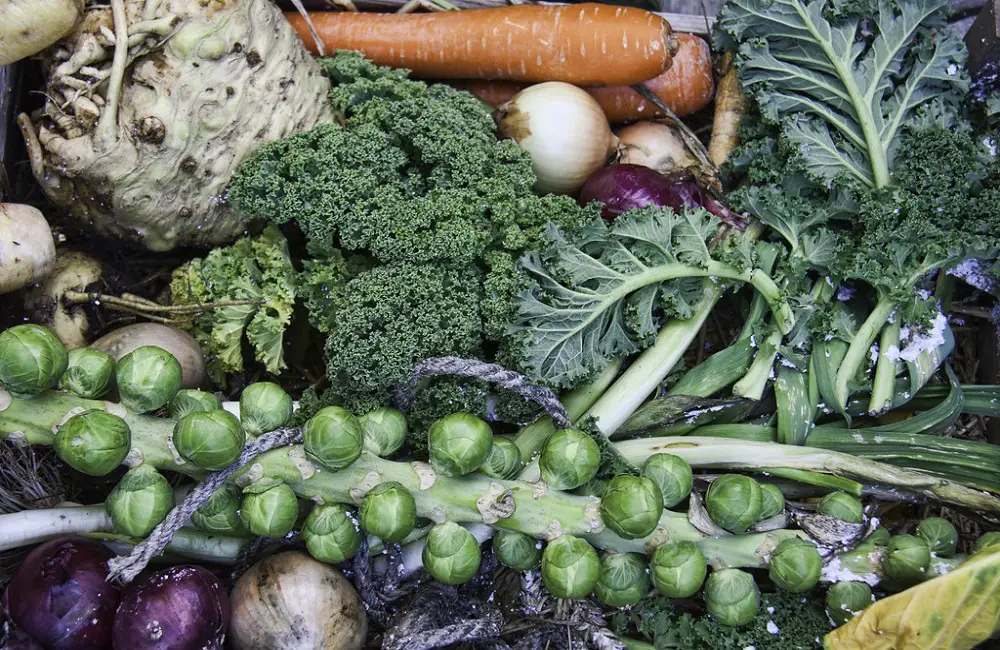These winter-hardy plants can help you maintain your vegetable garden throughout the entire year.
Good vegetables don’t only grow in the summer; cold-weather months are when some of the best fall and winter veggies mature. Popular winter plants include stew-worthy vegetables like carrots, turnips, onions, and other veggies, or lush greens that can withstand even the worst weather, including snow, rain, and ice.
Add a protective covering to your garden to assist your winter veggies survive the harshest months of the year. “These plants can grow in weather that gets below freezing, and even during light snowfalls,” explains Deborah Miuccio, coordinator of product development and testing at Gardener’s Supply Company. “A small greenhouse, or a greenhouse-like protective cover,” “This allows people the ability to grow their own food year-round.”
Are you prepared to begin establishing your own winter veggie garden? We asked specialists to list the hardiest crops that can resist any kind of frigid weather.
Carrots

Carrots are a versatile vegetable, perfect for a variety of dishes from roasted and glazed to raw in salads, pureed soups, or grated cakes. Cold weather can enhance their sweetness. According to Ginny Rosenkranz, master gardener coordinator at the University of Maryland Extension, carrots can be left in the ground with a layer of mulch and harvested through early winter. They also thrive under tunnels that protect the soil from freezing, allowing for year-round harvesting.
Zone: 3 to 10
Size: 12 inches tall and deep x 9 inches wide
Growing conditions: Full sun; well-drained soil
Turnips

Turnips can be grown in both spring and fall, but planting in late summer often yields a better flavor. They are resilient and can endure temperatures as low as 40 degrees Fahrenheit, making them a great option for harvest well into cooler weather.
Zone: 2 to 9
Size: 12 to 14 inches tall x 3 to 6 inches wide
Growing conditions: Full sun to partial shade; fertile, well-drained soil
Spinach
Spinach is hardy enough to survive temperatures as low as 28 degrees but tender enough to be the base for winter salads, entrees, and dips. Plant spinach about eight weeks before the first frost, and use covers to extend the harvest period.
Zone: 2 to 9
Size: 8 to 12 inches tall x 5 inches wide
Growing conditions: Full sun to partial shade; well-drained soil
Brussels Sprouts
Brussels sprouts thrive in temperatures below 65 degrees and can withstand cold down to 20 degrees. Due to their long growing season, they should be planted around four months before the first frost. Choose a sunny spot and keep them well-watered during the summer to protect from heat stress.
Zone: 3 to 9
Size: 24 to 26 inches tall x 12 inches wide
Growing conditions: Full sun; well-drained soil
Mustard Greens

Mustard greens, despite their delicate appearance, are resilient enough to withstand frost and temperatures just above freezing. Todd Carr, former senior garden editor at Martha Stewart Living, recommends starting them indoors in the fall and moving them outside once they germinate.
Zone: 8 to 11
Size: 20 inches tall x 24 inches wide
Growing conditions: Full sun; rich, well-drained soil
Lettuce
Lettuce flourishes in cooler temperatures and can be sown in the fall for a harvest one to three months later. For better seed visibility, especially with smaller seeds, mix them with sand before sowing. This will help you see where they are planted.
Zone: 2 to 11
Size: 6 inches tall x 12 inches wide
Growing conditions: Full to partial sun; rich, well-drained soil
Cabbage
Cabbage is robust enough to handle cold weather, making it an excellent fall vegetable. It thrives in frost and is ready for harvest in winter. In areas like southern California, you can start cabbage seeds in September for a successful crop.
Zone: 3 to 11
Size: 12 inches tall x 18 inches wide
Growing conditions: Full sun; well-drained soil
Broccoli

Broccoli prefers cooler temperatures and should be sown about 10 to 12 weeks before the first frost to avoid bolting, a process where the plant produces seeds instead of a harvestable vegetable. This is crucial for a productive crop.
Zone: 3 to 11
Size: 18 to 36 inches tall x 18 inches wide
Growing conditions: Full sun; well-drained soil
Kale

Kale benefits from sunlight and moist soil, making it ideal for a winter harvest. Protect your plants from cabbageworms by covering them with summer-weight fabric over hoops, which provides a simple and organic solution to keep pests away.
Zone: 7 to 10
Size: 12 to 24 inches tall x 12 to 24 inches wide
Growing requirements: Full to partial sun; well-drained soil
Cauliflower
Cauliflower requires an average of 50 to 80 days to mature. Like other brassicas, it should be planted about 10 weeks before the first frost to ensure a healthy winter harvest. Keeping the garden free of plant debris will help maintain the health of your cauliflower and deter bugs.
Zone: 2 to 11
Size: 12 to 14 inches tall x 12 to 18 inches wide
Growing conditions: Full sun; rich, well-drained soil

